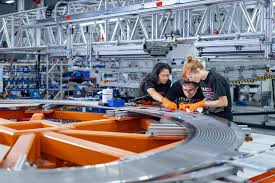
Breaking News
 Erika Kirk shares update after private in-person meeting with Candace Owens
Erika Kirk shares update after private in-person meeting with Candace Owens
 Candace Owens Reacts to Erika Kirk's Interviews and Comments about Questioning TPUSA
Candace Owens Reacts to Erika Kirk's Interviews and Comments about Questioning TPUSA
 Bank of America just leaked their report to institutional clients.
Bank of America just leaked their report to institutional clients.
 IDEAL HUB TO KICK OFF THE GRAND PLAN: BIRTH OF "USAMERICAS"
IDEAL HUB TO KICK OFF THE GRAND PLAN: BIRTH OF "USAMERICAS"
Top Tech News
 This tiny dev board is packed with features for ambitious makers
This tiny dev board is packed with features for ambitious makers
 Scientists Discover Gel to Regrow Tooth Enamel
Scientists Discover Gel to Regrow Tooth Enamel
 Vitamin C and Dandelion Root Killing Cancer Cells -- as Former CDC Director Calls for COVID-19...
Vitamin C and Dandelion Root Killing Cancer Cells -- as Former CDC Director Calls for COVID-19...
 Galactic Brain: US firm plans space-based data centers, power grid to challenge China
Galactic Brain: US firm plans space-based data centers, power grid to challenge China
 A microbial cleanup for glyphosate just earned a patent. Here's why that matters
A microbial cleanup for glyphosate just earned a patent. Here's why that matters
 Japan Breaks Internet Speed Record with 5 Million Times Faster Data Transfer
Japan Breaks Internet Speed Record with 5 Million Times Faster Data Transfer
 Advanced Propulsion Resources Part 1 of 2
Advanced Propulsion Resources Part 1 of 2
 PulsarFusion a forward-thinking UK aerospace company, is pushing the boundaries of space travel...
PulsarFusion a forward-thinking UK aerospace company, is pushing the boundaries of space travel...
 Dinky little laser box throws big-screen entertainment from inches away
Dinky little laser box throws big-screen entertainment from inches away
 'World's first' sodium-ion flashlight shines bright even at -40 ºF
'World's first' sodium-ion flashlight shines bright even at -40 ºF
Is the world ready for the transformational power of fusion?

Imagine:
One day in the early 2030s, an engineer at a newly constructed power plant near Richmond, Virginia, in the United States, will press a button. It will ignite the same reaction that takes place in our sun's core.
Inside a doughnut-shaped machine called a 'tokamak,' hydrogen isotopes will collide at enormous speed, fusing into helium. This reaction will produce 400 megawatts (MW) of clean, firm electricity, enough for a small city. This electricity will hit Virginia's power grid nanoseconds later, making nearby residents the first human beings to benefit from commercial fusion power generation.
By the time their children retire, fusion may be the world's dominant energy source, ushering in an era of energy abundance, not scarcity. And it will be the cheapest reliable power, and incidentally, the cleanest power too.
Fusion is the future of the global energy sector — the near future. While it may not happen exactly as we've just described, the first fusion power plant will almost certainly begin operations shortly after President-elect Trump's second term expires.



